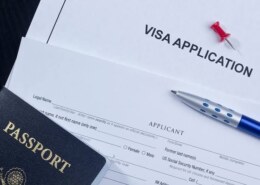Applying for a visa from Africa to the United States involves several steps and requirements. Here’s an overview of the process and everything you need to know:
Visa Types: The most common visa types for travel to the United States are tourist visas (B-2), business visas (B-1), student visas (F and M), and work visas (H, L, O, P, etc.). The specific visa category you need will depend on the purpose of your visit.
Determine Visa Eligibility: Before applying, check the U.S. Department of State’s website or consult with the U.S. embassy or consulate in your country to verify if you meet the eligibility criteria for the desired visa type. Each visa category has specific requirements and qualifications.
Complete the Online Application (DS-160): The first step is to complete the Nonimmigrant Visa Electronic Application (DS-160) form online. Provide accurate and complete information about yourself, your purpose of travel, and background details. Upon completion, you will receive a confirmation page with a unique barcode.
Pay the Application Fee: Visa application fees must be paid before scheduling an interview appointment. The payment methods and fee amounts can vary by country, so check the U.S. embassy or consulate’s website for the specific instructions.
Schedule Visa Interview: After paying the visa fee, schedule an appointment for a visa interview at the U.S. embassy or consulate. Appointment availability may vary, so it’s advisable to book well in advance. Some countries may also require additional appointments, such as biometric fingerprinting.
Gather Required Documentation: Prepare the necessary documents to support your visa application. Commonly required documents include a valid passport, DS-160 confirmation page, visa application fee receipt, passport-sized photographs, proof of ties to your home country (employment, family, property), travel itinerary, financial evidence to demonstrate your ability to cover expenses, and supporting documents specific to your visa category (e.g., invitation letters, academic transcripts, employment letters).
Attend the Visa Interview: On the scheduled date, appear at the U.S. embassy or consulate for your visa interview. Dress professionally, arrive early, and bring all required documents. During the interview, be prepared to answer questions regarding your purpose of travel, ties to your home country, and your ability to financially support yourself during your stay in the United States. Be honest and concise in your responses.
Visa Processing and Approval: After the interview, the consular officer will make a decision on your visa application. If approved, your passport will be returned to you with the visa affixed. The processing time can vary, so check the embassy or consulate’s website for estimated timelines.
Additional Security Checks: In some cases, additional security checks may be required, which can lengthen the processing time. These checks are a routine part of the visa process and are conducted for the safety and security of all travelers.
Travel to the United States: Once you receive your visa, review it for accuracy. Make sure to plan your travel accordingly, adhering to the visa validity dates. Upon arrival in the United States, you may be subject to further screening by immigration officers.
It’s important to note that visa application procedures can vary slightly between countries. Therefore, it’s crucial to visit the U.S. embassy or consulate website specific to your country for detailed instructions, application forms, fee payment procedures, and any additional requirements.
Additionally, consider seeking professional assistance from an immigration lawyer or visa consultant to ensure your application is complete and to increase your chances of success.

